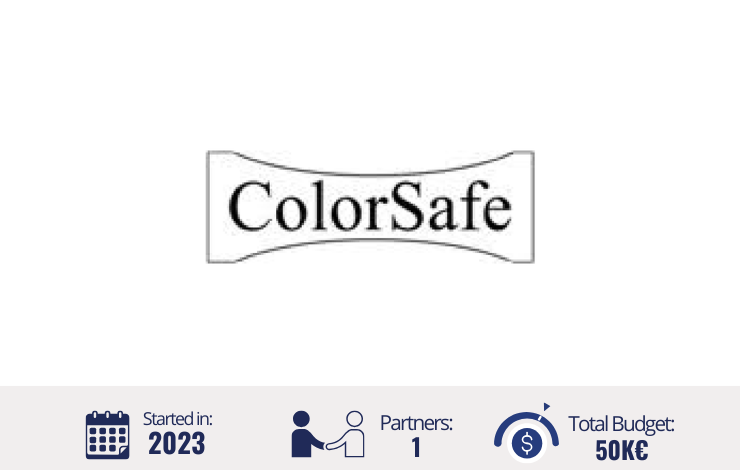
Starting Date: 2023
Number of Partners: 1
Total Budget: 50K€
Structural monitoring, for the detection of cracks, is an important activity to ensure the safety of buildings, dams and bridges, just to name a few. From the engineering point of view, it is important that this monitorization is not only made in real time but also allowing for a localization of the deformed region. To help with this demand, the project Structural monitoring using cholesteric liquid crystal phases (ColorSafe) aims to study the use of films containing cholesteric liquid crystal phases for structural monitoring and, also, to contribute to the increase of the current knowledge on the detection of fissures on structural elements.
The idea behind ColorSafe is to take advantage of the capability that cholesteric liquid crystalline phases have to reflect colored light that can be used as a sensor to evidence structural degradation. The fact that their optical properties couple strongly to their mechanical properties suggest the application of these elastomers as sensors in structural monitoring. This will represent a positive technological impact and, as there is no need of energy or batteries, it is expected that this will cost less than the sensors used nowadays.
Within an exploratory perspective, ColorSafe is organized in order to identify the optimum film configuration and select the adhesive for the different types of materials used in structural elements. Selection of the adhesive is a crucial part of the ColorSafe workplan to ensure that the adhesive works well in a variety of microscopically rough surfaces at considerable time scales and has the adequate mechanical properties in order to transfer the deformations properly and reliably for long duration.
By using abundant and renewable resources (especially when cellulosic materials are used) the operating costs will be lower. The possibility to use a system that will keep the number of electronic components and sensors to a minimum will allow for low production costs while still permitting the collection of information in real-time.
The concept behind ColorSafe is to take advantage from the use of polymeric films that have a component that forms a cholesteric liquid crystalline phase. These phases result from molecular self-assembly that, under the appropriate conditions, form a helical structure. The light reflected by the cholesteric helix is colored if the wavelength of the incident light is of the same order of magnitude than the helical pitch, and in the visible range of the spectrum, (see Figure1). It is possible to change the color of the reflected light if a change in the value of the cholesteric pitch is promoted, which, in turn, change the wavelength of the reflected light. The idea is to use the optical properties of the cholesteric phase and their ability to change color when the helix is distorted by mechanical deformation. As the helix is stretched when the material undergoes deformation, the helical pitch changes proportionally to the deformation and so does the color of the reflected light (see Figure 2).
This association between deformation and color allows the monitorization of deformations suffered by materials attached to cholesteric film. When applied to the surface of a structural element, such as a beam or column, the cholesteric phase will exhibit a change of color in the regions that correspond to deformation areas of the element. One advantage of this system is the fact that the exhibited color depends on the magnitude of the deformation allowing the creation of a “color code” to evaluate the extension of the damages quickly and easily.
The research team of ColorSafe will use two different approaches to optimize the use of cholesteric phases and the calibration of the “color code” to the magnitude of the deformation:
1 – Liquid crystal elastomer (cholesteric);
2 – Polymeric films of cellulose derivatives with dispersed droplets of a cholesteric (see Figure 3);
From all the approaches listed above, priority will be given to option 2, which use cellulosic materials in order to increase ColorSafe compatibility with environmental concerns by favoring a resource that is renewable and biodegradable.
ColorSafe benefits from the synergy between three advanced scientific academic directions: materials engineering, civil engineering and mechanical engineering to explore the potential offered by cholesteric phases for structural health monitoring.
Although it is not the main focus of our research, the potential of commercializing the solutions to be found during the ColorSafe research plan will always guide us since such efforts will actually begin with the project’s ending.